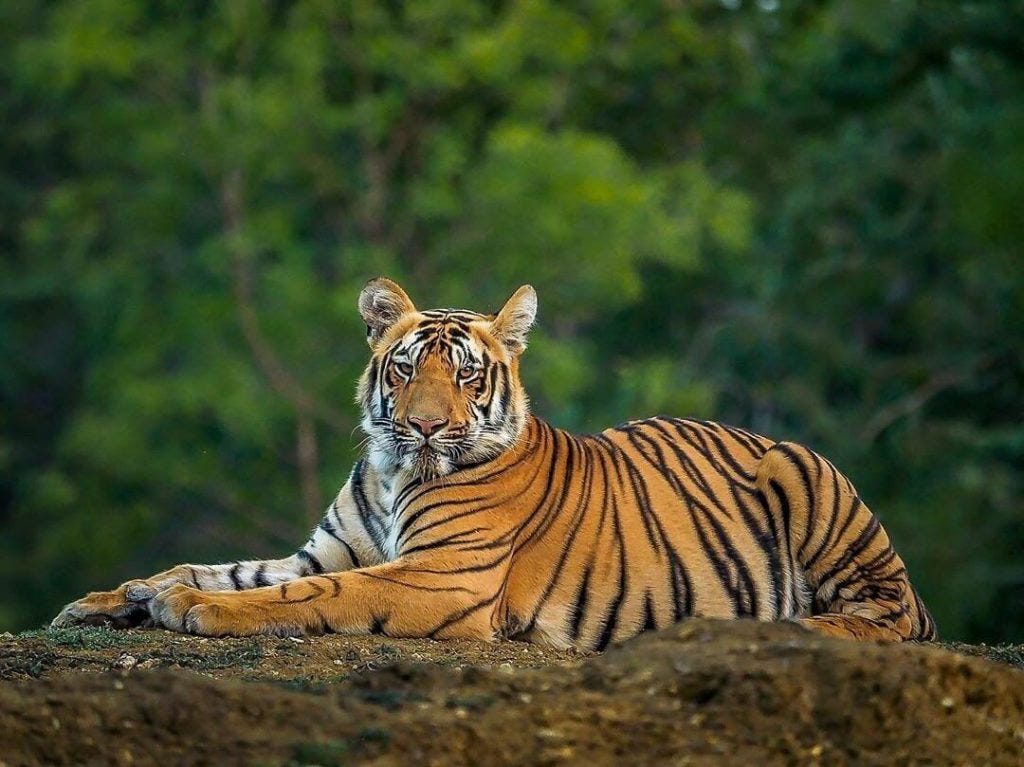The Sundarbans will remain closed from 1 June to 31 August to allow wildlife to breed and recover. While this move supports biodiversity, forest-dependent communities face hardship and call for better support.
A Forest Full of Potential and the Pause It Needs
The Sundarbans is a living, breathing wonder that is more than just a forest. Extending along Bangladesh’s southern coast, it is the largest mangrove forest in the world, home to the majestic Royal Bengal Tiger, rare aquatic species, birds, reptiles, and plant life found nowhere else on earth.
It is a natural shield protecting millions from cyclones, a carbon sink in the fight against climate change, and a lifeline for thousands who depend on it for fish, honey, crabs, and survival. But even the strongest need rest.
From 1 June to 31 August, the Sundarbans is being given just that three months without human footsteps, nets, or noise. A seasonal ban, imposed by the Forest Department, has closed the forest to everyone tourists, fishermen, honey collectors, crab harvesters all in the hope of allowing wildlife to breed undisturbed and the ecosystem to rejuvenate.
It’s a solution rooted in science, love for nature, and long-term vision. But this healing time for the forest has come at a cost one paid by the very people who know the Sundarbans best.
Why This Seasonal Ban Matters
Md Rezaul Karim Chowdhury, Divisional Forest Officer (DFO) of the Sundarbans East Forest Division, explains the importance of the closure: “If we can keep the forest quiet during this time, it will significantly enhance breeding activities, specially for aquatic species. The fish population and overall wildlife will thrive.”
This ban isn’t new. It’s part of an evolving strategy to protect the Sundarbans’ delicate biodiversity. Based on research and guidance from the Integrated Resources Management Plan (IRMP), the schedule was updated in 2022 to start from 1 June instead of July, ensuring better alignment with the breeding seasons of fish and other species. And it’s working.
The Sundarbans, a UNESCO World Heritage Site, shelters 42 species of mammals, 35 reptiles, 8 amphibians, 290 bird species, 219 aquatic species, and 344 varieties of plants. Many of them, including 25 bird species and 5 mammals, are endangered. Giving them a quiet season offers hope for survival and rebirth.
A Lifeline Cut Short for the Forest’s People
But while the forest takes a break, the people who depend on it have no such luxury.
For communities like Gabura in Satkhira or Sharankhola in Bagerhat, this forest is not a weekend escape, it’s the only means to feed their children, repair their homes, and send their kids to school. The three-month ban has, once again, placed an unbearable burden on their shoulders.
“The Sundarbans is our lifeline. If we cannot enter the forest, how will we feed our families?” asks Saiful Islam, a forest dweller from Gabura.
“The rice distributed by the government doesn’t reach everyone. Often, people who never go to the forest get aid while we’re left with nothing.”
Each beneficiary is entitled to 77 kilograms of rice across the three-month period, but distribution has been marred by allegations of corruption and irregularity.
Read More: Major Sinha Case: Death Sentence Confirmed for OC Pradeep and Liakat
A Broken Aid System and A Growing Frustration
“Crabs don’t lay eggs at this time of year. Why are we banned now?” asks Jalil Gazi, a fisherman trying to make sense of the restriction.
“Some people have Boat License Certificates but never enter the forest they rent their licenses out. Meanwhile, those of us who actually live off the forest are ignored.”
Locals also allege that illegal intrusions continue during the ban, often with the complicity of corrupt officials. Some boats still slip into the mangrove shadows at night, nets in hand, while honest fishermen are left to watch helplessly from the shore.
“How do they get into the forest without the authorities noticing?” one resident asked, requesting anonymity.
“We follow the rules. But rules don’t apply equally for everyone.”
A Pause That Could Heal the Forest If Properly Enforced
Environmental activists and community leaders still support the core idea behind the seasonal closure. They recognize that without breaks like this, the Sundarbans might lose what makes it so rare and precious.
“The forest is like our mother,” says Mohammad Nur Alam Sheikh, a member of Bangladesh Poribesh Andolon (BAPA).
“But it is humans who are causing her the most harm. The authorities must act with sincerity.”
Activists are calling for stronger enforcement, community involvement, and zero tolerance for corruption if the ban is to succeed. They also argue that law enforcement not just the Forest Department should patrol the forest and surrounding rivers during this sensitive period.
The Real Solution: Inclusion, Integrity, and Innovation
If the goal is to protect biodiversity and the people who live with it, then the answer can’t be a simple closure. It must be an inclusive conservation plan one that values the voice and role of local communities.
Here’s what must change:
-
Fix the Aid Distribution System
All forest-dependent families not just a select few must receive the support promised. The system must be transparent and free from political bias or favoritism. -
Stop Illegal Access Completely
No one should be allowed to enter the forest during the ban, especially with official help. A ban must be a ban for all. -
Empower Communities as Partners
Involve local fishermen, honey collectors, and villagers in forest protection. They are not outsiders they are the forest’s neighbors and its most natural guardians. - Support Alternative Livelihoods
Develop eco-tourism, sustainable aquaculture, or mangrove-based small businesses to reduce dependency on seasonal forest access.
The Forest Needs This Rest But So Do Its People
Yes, the Sundarbans needs protection. It needs time, space, and quiet to heal. But this healing must be shared. Even the greatest of intentions can turn into a burden if we fail to consider the people who live on the outside of this forest those who are familiar with its trails, tides, and seasons.
“If the forest thrives, so do we,” says Nazmul Islam from Sharankhola.
“But if our families starve, we will have no choice but to enter it again—ban or no ban.”
As caretakers of the Sundarbans, our responsibility goes beyond watching from a distance. Forests are the lungs of our planet, and according to global environmental standards, every country should ideally have at least 25% of its land covered by forests. Bangladesh currently falls short of that mark, making the Sundarbans even more critical to our ecological balance.
Protecting this vital mangrove forest is not just an environmental duty—it’s a national priority. Together, we must act with sincerity to preserve it for the future. Let the Sundarbans rest. Let its fish spawn, its birds nest, and its tigers roam undisturbed. But let us not forget the hands that have lived with it, respected it, and cared for it for generations.
















